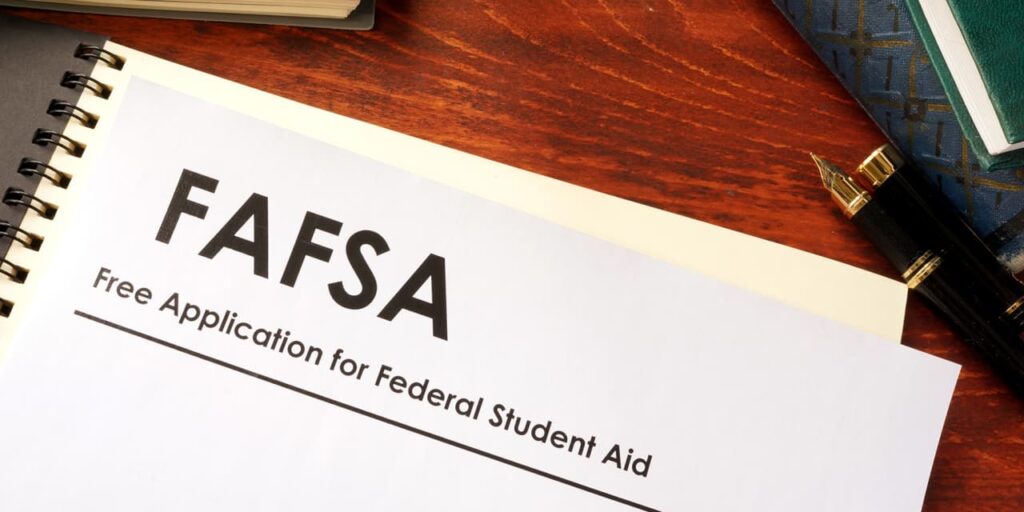The bulk of the financial aid students use to pay for college is in limbo and likely will be for months, thanks to a glitchy rollout of the new FAFSA. But at least $300 million in scholarship money will go out as originally planned.
Scholarship America, which works with more than 1,000 organizations across the country to distribute scholarships, isn’t requiring applicants to fill out the Free Application for Federal Student Aid, or FAFSA. The FAFSA is key to unlocking federal, state and school financial-aid funds. Private scholarship providers typically use it as part of their application process as well.
But Scholarship America made the decision to scrap the FAFSA in the fall after it became clear that there would be delays in when scholarship providers received applicants’ FAFSA data as part of a major overhaul of the form.
Mike Nylund, the chief executive officer of Scholarship America, said his decades of experience in the financial-aid industry made him wary that the FAFSA launch would go smoothly. He’s watched the Education Department make changes that overall are positive for students and families, but that can cause some difficulty in the early stages of their implementation.
“This could be one of those changes that are hard and so let’s prepare for it,” he said of his thoughts at the time.
Over the past several weeks, students, families, schools, scholarship providers and lawmakers have complained about the rocky rollout of the new FAFSA. Congress charged the Education Department with overhauling the form and the formula underlying it by the end of last year.
The intention was to help direct more aid to low-income students. But glitches in accessing the form and a significant delay in when colleges will receive students’ data from the FAFSA could put those students most at risk of not having the financial information they need to make a college decision.
Scholarship providers ‘in a pickle’
Typically, scholarship providers that award funding based on financial need rely on the information the FAFSA spits out to make their determination, said Mark Kantrowitz, the author of “How to Appeal for More College Financial Aid.” More than one-third of Scholarship America’s dollars are need-based.
With families struggling to fill out the FAFSA form and delays in processing the data, scholarship organizations are “in a pickle,” Kantrowitz said.
He said he’s aware of some scholarship providers that have changed their process this year as a result of the challenges, so that they aren’t relying on the FAFSA.
At Scholarship America, officials decided to ask 12 questions that get at a student’s financial situation instead of using the FAFSA. Since Scholarship America is not relying on the federal form, there won’t be a delay in when students receive funding from the group’s partner organizations, which include Fortune 500 companies, small businesses, foundations and more.
“We want to make sure students get the dollars they need, and so that’s what our focus is,” Nylund said. “We think private scholarships can perhaps alleviate some concern and stress they have this coming academic year.”
Given that students often need scholarships to plug the gap between what’s available to them in grants and loans, knowing how much scholarship funding they’ll get as early as possible can be helpful, said Kim Cook, the executive director of the National College Attainment Network.
“Making this easier for students to access the additional money they need to afford college is very important,” she said. “Going with some component of need that doesn’t involve the FAFSA allows those scholarship sponsors to be pretty nimble, to be pretty fast, to be pretty up front, to be able to communicate with students about their aid offers earlier in the process.”
Despite delays, students should still fill out the FAFSA
Still, dropping the FAFSA can create a messaging challenge. Organizations like Cook’s and Scholarship America are still urging students to fill out the form because it is the only way to unlock federal grants, student loans, state-based aid and other funding. Funding that comes from a scholarship provider typically isn’t enough to come close to covering college.
“We will continue to say that filling out a FAFSA is important and must be done by all seniors,” Cook said. “To the extent that scholarship providers can be more flexible who can front load their deadlines by not relying on the FAFSA, that’s helpful,” she said.
For some scholarship providers, dropping the FAFSA isn’t feasible. The Scholarship Foundation of St. Louis only awards funding to students if the organization can fill the gap between the cost of college and what a student is offered in federal, state and school grants, according to executive director Faith Sandler.
“Ultimately, the goal of our scholarship aid is to make it possible” for students to attend college, “not to make it more comfortable or not to make it more palatable,” she said.
That means the organization needs to know the information the FAFSA spits out and the funding students are getting from other sources — information that can only be gleaned after a student fills out the form and receives their financial-aid offers from colleges.
“We pretty much have to be sure that they’re getting as much Pell grant as they’re entitled to and other need-based aid that is available to them,” Sandler said.
She said she wondered out loud to her staff whether the organization could award scholarships to students who had received them in the past without relying on the FAFSA this year, given all of the glitches. But Sandler said they advised her that that wouldn’t be possible, in large part because the organization also doesn’t want students to enroll in a college before they have all of their financial-aid information in hand. All of that information is conditional on the FAFSA.
“Telling them we’ll just squint and forget the FAFSA is just contrary to what we’re trying to teach the students about sound financial practice: Don’t commit yourself to an expense you don’t know how you’re going to cover,” she said.
But in the meantime, her organization is struggling with the delays. “We will be backed right up to the deadline for various enrollment deposits and, for first-semester payments by the time our students get their award letters, make the decision and we review the application and issue the funding,” she said.
Her organization is doing the best it can to ease the anxiety. For one, they’ve extended their application deadline by one month to May 15.
“A lot of our students will not have award letters until significantly after that,” she said. “At least we can get started reviewing the rest of their application. Mostly, we wanted to assure them that we understood the FAFSA is out of their control and they can ease up on the worry meter for just a little while on that.”
Read the full article here










